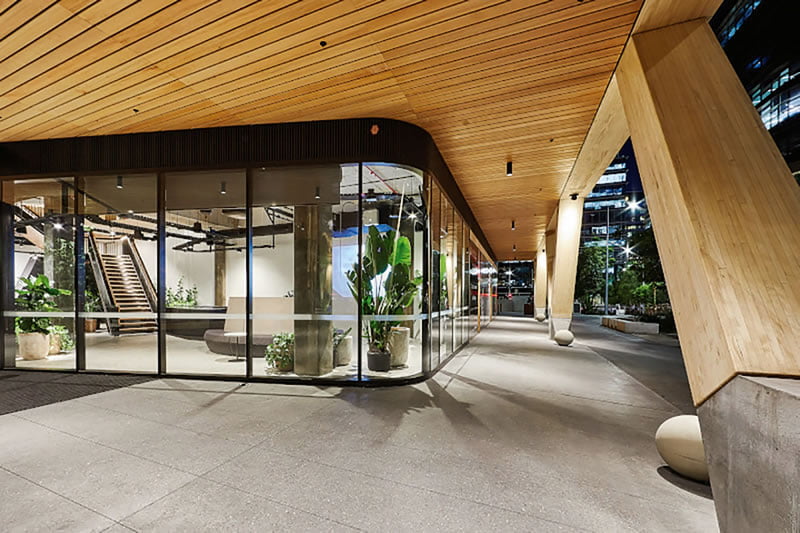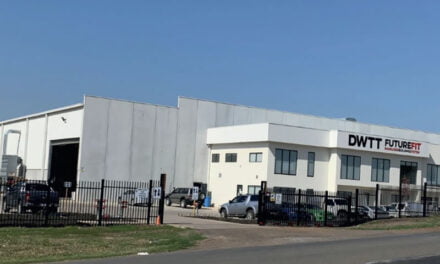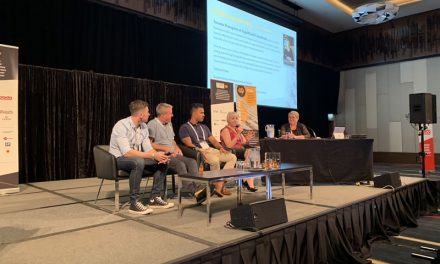The Federal Government’s $300 million Timber Building Program comes on the back of CEFC research that shows transforming construction is at the heart of lowering carbon emissions.
Jonas Bengtsson, founder and CEO of EDGE Environment was extremely clear about the best way to reduce embodied carbon in construction.
“It’s at the planning stage you can have the most radical reductions,” he told the WoodSolutions Opportunities for Cutting Embodied Carbon and the Role of Timber Structures webinar audience in mid-February. “If you think about re-using of assets, and adaptive re-use, that’s how you really avoid carbon emissions,” he announced before showing a slide of carbon reduction strategies. The left-hand column, at a 100% reduction, was labelled ‘build nothing’.
Bengtsson would be the first to acknowledge that’s not always an option, but the webinar represented a challenge to rethink how we approach major construction in Australia. Far from being an academic exercise, it was organised in the wake of a $300 million timber building commitment from the Federal Government’s Clean Energy Finance Corporation (CEFC), which arose out of the Australian buildings and infrastructure: Opportunities for cutting embodied carbon report (which EDGE Environment was a partner in producing).
Announcing the Timber Building Program, CEFC CEO Ian Learmonth said, “Timber has been used in construction for generations. Innovations in engineered wood products have created new opportunities for mass timber construction to be used in larger projects, creating the potential for immediate and long-term environmental benefits.
“Our new Timber Building Program will help finance this transition by encouraging owners, developers and builders to use lower carbon engineered wood products in their projects. The CEFC has a strong track record in financing new market developments, from large-scale solar to cleantech start-ups. We are excited to bring this expertise to sustainable construction.”
The program offers debt finance for projects that meet criteria that include using low-carbon engineered wood products, being commercially sound and requiring $20-50 million in CEFC debt finance. The program announcement suggests most will be targeted at commercial offices, retail, industrial, healthcare and education, but adds: “Finance may also be available for multi-residential apartments, seniors living and student accommodation projects. Concessional finance may be available under certain circumstances.”
While the credit support will be directly welcomed by developers such as Lendlease, who have been independently working on large-scale timber constructions, the program is about much more than funding. The money is a means to the end of reducing embodied carbon in the construction industry. It was this theme the WoodSolutions webinar focused on.
Christina Wijeratne represented the CEFC, at the webinar. She opened with a discussion of embodied carbon, which she called “the next frontier in the task to decarbonise the property sector”.
Wijeratne said the report showed currently 28% of emissions in construction come from embodied carbon (representing the carbon cost of the materials, transport, construction and more, including end of life), with 72% coming from operational carbon. This embodied carbon equates to some 30-50 million tonnes of CO2 equivalent or 5-10% of Australian greenhouse emissions.
By 2050, climate change reduction strategies will have dramatically lowered the operational carbon emissions, but if nothing is done to address embodied carbon, it will grow to account for almost half of total emissions from new structures.
Lowering embodied carbon represents a significant economic opportunity for sustainably rated materials and projects. Wijeratne said the carbon solutions market could be worth $1bn in the coming year and grow from there. Importantly, industry has been independently implementing embodied carbon reduction initiatives, and so the report was able to compare sustainably rated infrastructure projects with those of similar design that didn’t incorporate sustainability measures. The former achieved up to a 33% reduction in embodied carbon over the latter.
Interestingly, multiple options existed that would cut embodied carbon and also cut the cost of the project’s materials. Engineered timber was a leading option here, reducing embodied carbon by up to 75% compared to traditional steel and concrete, hence the Timber Building Program.
Broader impacts
It’s a sad fact that most of us aren’t working on $20 million+ projects right now, but the benefits of cutting embodied carbon stretch out across the sector.
Bengtsson, the second speaker at the webinar, outlined several of the pathways to reduction, including not building, adapting existing buildings, building cleverly with optimised design and low-carbon materials, and making each building more efficient.
Each option had less potential to reduce carbon than the former, but none excluded the others. It may not be possible to avoid a new construction, but by designing it for re-use at its end of life, those carbon reduction benefits can still be designed into the structure’s future. And this focus on planning and design could reap benefits in all scales of construction, from single residential upwards.
Inevitably, many of the practical changes open to designers at the moment come at the end of the option list with lower returns, but that doesn’t make them minor. Bengtsson investigated a range of materials substitutions, including engineered timber for steel. The team didn’t adopt a purist attitude, looking for shifting structures to say 10%, 30% or 50% timber.
Any real increase in engineered timber and precast concrete represented significant carbon abatement at the same time as direct project cost abatement, Bengtsson showed.
The webinar rounded out with two project discussions. The first saw Melissa Gaspari, sustainability leader NSW and ACT at Aurecon talking about 25 King Street, built with partner Lendlease. “The tenant and the developer really joined forces in making the decision to go to timber,” Gaspari said.
“The majority of the embodied carbon saving comes from the timber itself.”
Built using CLT and glulam, 25 King Street delivers a 74% reduction in carbon over 60 years compared to an equivalent conventional reinforced concrete building, with a 38.7% reduction in embodied carbon, not counting the sequestered carbon in the timber.
Atreyu de Lacy, dynamic engineer at TTW, talked about the North and South Apartments project at La Trobe University, which was designed in timber after a first draft that would have used reinforced concrete. The as-built solution represents a 75% embodied carbon reduction over the draft.
“The timber was imported from Italy,” de Lacy said. “That decision was largely driven by the builder and their procurement processes… One of the considerations was programming and the local suppliers who would have had the capability to supply this project at the time weren’t able to meet the required program.”
Paolo Lavisci, WoodSolutions’ program development manager mid-rise construction, who chaired the webinar, flagged that timber supply was an ongoing problem, though EWP represented a more efficient use of available sawlog resource than traditional light timber usage. de Lacy added that the needs for additional manufacturing capacity and better transport logistics were even more urgent than additional forestry resources.
Here again the possibilities of CEFC involvement were flagged, with the corporation providing a useful adjunct to traditional financing mechanisms for expanding forestry, manufacturing and transport. All these are elements that will help the entirety of the timber and construction industries in Australia, not just multi-million dollar projects.
Additionally, by increasing the use of EWP in construction, the CEFC’s program will also help to normalise mass timbers as standard materials, increasing the number of designers and builders familiar with their use. Over the past few years, suppliers and fabricators have often been adapting to new materials and design methodologies faster than builders in particular. But a $300m incentive to learn will change that quickly.
Wijeratne is clear that the CEFC hopes its influence will go far beyond the major projects it finances directly. As she told the webinar: “I think success over the next few years [will be…] not just supporting the projects that we’re actually investing in, but building the capability in the market by supporting demand for supply, typically domestically, but also the skills.”
She described proposed timber-rich structures that had seen the timber component fall away because “they hadn’t done it before… When it’s the right material for the right structure, we really want to make sure that people are deciding to go with the timber. By driving up that demand, the supplies and the skills will follow.”
For more or to download the report, visit www.cefc.com.au, or find the webinar here.
Image: 25 King Street is a timber success story with EWP speeding the build, cutting costs and lowering embodied carbon.












